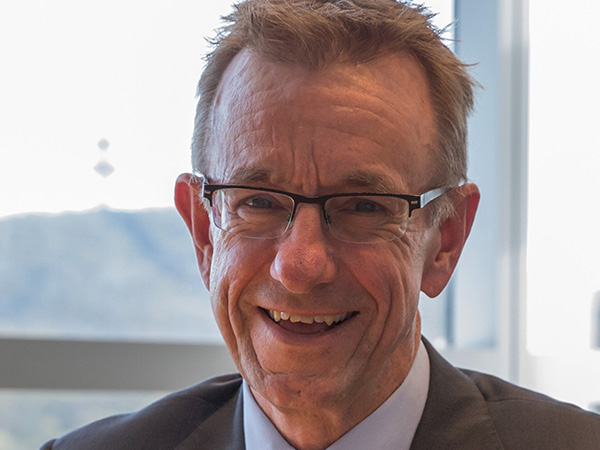All about getting a fair share
By Phillip Glyde, MDBA Chief Executive
At the heart of the Murray–Darling Basin Plan is the recognition that the water of the Basin’s rivers needs to be shared in a fair way. This has meant putting the needs of the environment on par with those of irrigators to underpin a sustainable future for all, a concept familiar to those involved in Landcare.
I know just how much work farmers do to make the most of their water resources, and the contribution they make to sustaining and improving the environment every day. On-farm it is about achieving the right balance between growing production and sustaining the environment on which that production depends—and at the Basin scale the MDBA, along with Basin governments, is trying to achieve the same thing.

MDBA chief executive, Phillip Glyde.
There is currently an opportunity before the Australian Parliament that could adjust the Basin Plan’s 2750-gigalitre recovery target to benefit farmers AND the river environment. With the assistance of the CSIRO, the MDBA developed a scientifically sound method to calculate how more efficient management of water for the environment would achieve at least the same level of benefit while reducing the water recovery target in the southern Basin. We can deliver the environmental benefits of 2750 gigalitres of recovered water while recovering 605 gigalitres less.
The mechanism to achieve this is a package of projects the South Australian, Victorian and New South Wales governments have put forward to repair the wetlands and billabongs, put water onto the floodplains, make sensible changes to river operation rules, and move water through the river system at times when the environment needs it most.
The MDBA assessed that the projects would deliver the environmental outcomes the Basin Plan seeks while allowing 605 gigalitres of water to remain available for production in irrigation communities.
These projects go hand in hand with a commitment by Basin governments to further modernise water infrastructure to deliver up to 450 gigalitres of additional water for the health of the river system, without negative social and economic impacts.
The Australian Parliament is expected to vote on an amendment to progress with this ground-breaking work soon.
I recognise that implementing the Basin Plan is not without its challenges—but it remains the nation’s best pathway for securing the future of this vital shared resource. In the long run, to succeed the Plan needs a sustained commitment from everyone—farming communities and governments alike—to stay the course. The Basin Plan is a visionary and long-term policy to sustain the Murray–Darling Basin’s environment, industries and communities—and it is working.
To keep up to date, I encourage you to follow the MDBA on Facebook and Twitter.



